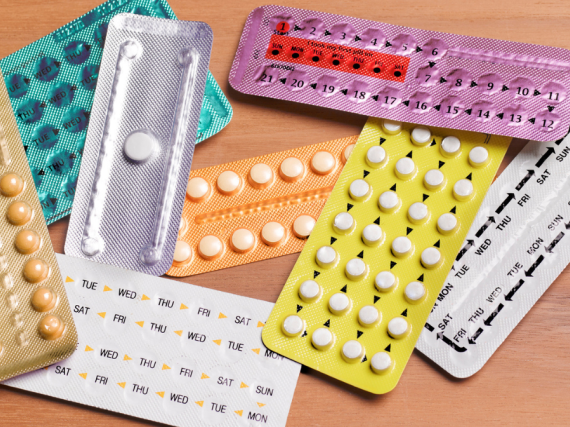4 Ways to Access Birth Control
Birth control has given folks everywhere the power to decide their own futures on their own terms. Thanks to science, people can choose from 18 categories of FDA-approved birth control methods. But not all methods are right for everyone all the time. For example, while an IUD or implant may make more sense for someone who doesn’t want to get pregnant for at least a year or two, methods such as the pill, the patch, and the shot are a bit more flexible. There are a variety of factors to consider when choosing a contraceptive method, including (but not limited to) potential side effects, control over the method, non-contraceptive benefits, and cost.
There’s no such thing as the perfect method, and there is no hierarchy of birth control based on effectiveness or longevity. What matters most is how someone feels about how their method meets their expectations for their lifestyle and their body. As life evolves, so too may folk’s health care needs and how they access their method!
With so many options available for obtaining birth control, it’s easier than ever to take control of your life. In celebration of World Contraception Day on September 26, here are four ways people can access the birth control they need and deserve:
Over the Counter
While some might associate birth control with doctors, there are actually a few non-hormonal methods that folks can access on the shelves at local stores:
Internal condoms may be more difficult to find. And while a prescription is not required to buy internal condoms from a clinic, nonprofit, health department, or online, it’s probably the cheapest way to go—if you have insurance, you may be able to get internal condoms for free with a prescription.
People can also buy emergency contraception over the counter without an age limit, but it won’t necessarily be covered by health insurance.
Soon we might be able to add another method to that list! #FreeThePill is a movement to make the birth control pill available (and affordable) over the counter. Research has also shown that when the pill moves over the counter it remains a safe and effective method of birth control. While over-the-counter birth control pills would expand access to countless people, it wouldn’t remove the need to see a doctor regularly for things such as well woman visits and Pap smears.
Directly from the Pharmacy
Currently, 23 states allow pharmacists to prescribe self-administered hormonal birth control methods, such as the pill, the ring, and the patch.
People in those states will be asked to self-screen for birth control by filling out a questionnaire at the pharmacy. This way, the pharmacist can figure out whether they’re a good candidate for certain types of birth control. Some people, such as those who have a history of blot clots or those who smoke, are at higher risk of side effects when using certain types of birth control. Along with reviewing someone’s questionnaire, the pharmacist will ask them about their medical history, their other medications, whether they’re pregnant, and will take their blood pressure. With this information, they’ll determine whether hormonal birth control is safe and help choose the best option.
Additionally, 22 states (including DC) require certain insurance plans to cover an extended supply of contraception! That means that while typical plans only cover 30- to 90-day supplies of birth control at one time, extended supply laws institute 6- to 12-month coverage requirements.
Telehealth
For many people, getting contraception means having to do more than showing up to an appointment. It could mean traveling a long distance, taking time off work, or finding childcare. Telemedicine can help overcome some of these common barriers and allow people to get their birth control from the comfort of their own home.
With telehealth, people can get a birth control prescription with an online health questionnaire or video visit with a provider; no waiting room or in-person visit needed. Many companies provide free shipping and accept health insurance, meaning it could cost $0 out of pocket. Plus, folks may be able to sign up for automatic refills—so no need to worry about remembering to order the next batch.
Birth control pills, the patch, the shot, the ring, and emergency contraception are all available through telehealth. Many services also offer extra perks such as free or discounted internal and external condoms.
Health care providers who work in telehealth are real human beings who are required to fulfill the same licensing, education, and certification requirements as providers offering in-person care. And many of them DO offer in-person care as well!
Doctor’s Office
A Pap smear or a pelvic exam during a doctor’s appointment is not required to get a birth control prescription. The provider will just ask basic health questions about blood pressure and health history. But other in-person services include breast exams, STI testing, a pelvic exam, and more.
Going to an actual office is the only way to get some of the most effective birth control methods—IUD, the implant, and sterilization. Providers can also prescribe the shot, the pill, the ring, and the patch, which can be filled and picked up at a local pharmacy. Some clinics also have generic birth control pills on hand.
No matter what kind of reproductive health service someone is looking for, Bedsider’s clinic finder will help locate a health care provider. Bedsider can also help folks prepare for their appointment and get the most out of their visit!
Has access to birth control helped liver your life based on your own terms? Join us in saying #ThxBirthControl on November 17, 2021!


